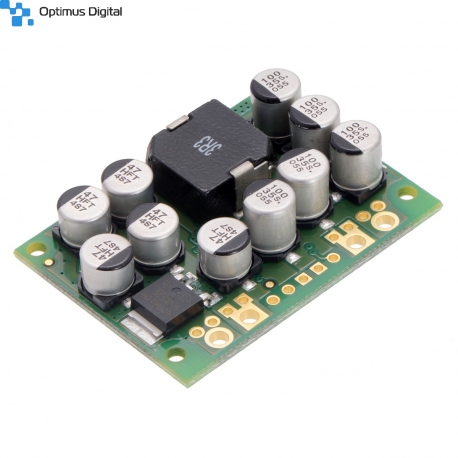Dupa plasarea solicitării de comandă, in sectiunea Istoric puteti vedea cate solicitări de comandă mai avem de procesat inaintea dumneavoastra
Program de lucru: Luni - Vineri 9:00 - 18:00, pauza 13:00 - 14:00.
Se efectueaza lucrari de mentenanta la site si pot aparea erori. In cazul in care intampinati erori va rugam sa reincercati mai tarziu.
Ridicarea personala este disponibila pentru comenzile achitate in avans. Se pot ridica dupa ce sunt pregatite.
Niciun produs
 Mărește
Mărește
Sursă de Tensiune 12 V,15 A Step-Down D24V150F12
0104110000024169
Produs nou
Sursă de Tensiune 12 V,15 A Step-Down D24V150F12 utilă pentru aplicațiile dumneavoastră unde aveți nevoie de un curent mare, de până la 15A.
Acest produs nu mai este in stoc
- Scrie o recenzie
- Elimina acest produs din lista mea de favorite.
- Adauga acest produs la lista mea de favorite.
- Imprimă
Informații
Caracteristici tehnice:
- Tensiune de intrare: 14.5V - 40V;
- Tensiune de ieșire fixă: 12V;
- Curent maxim de ieșire: 15A;
- Curent maxim de scurgere: 100mA;
- Eficiență între 80% și 95%;
- Protecție la alimentare inversă, supracurent, supratemperatură și subtensiune;
- Soft - start;
- Pin Power good pentru a indica daca sursa funcționează corect.
Dimensiuni: 1.7" x 1.25" x 0.43".
Masă: 19g.
Tensiunea de ieșire poate crește liniar până la 15.2V, pentru un curent de ieșire de 15A. Pentru reducerea curentului de scurgere până la 10uA/V, se poate folosi pinul ENABLE pentru a opri sursa.
Acest produs reprezintă o sursa de tensiune step-down, ce funcționează în comutație și are o tensiune de ieșire de 12V. Modul de funcționare oferă o eficiența a conversiei de tensiune de până la 95%, astfel că disiparea de căldură este foarte mică.
Produsul are dimensiuni mici și poate fi inclus în proiectele dumneavoastră inovative. Este util pentru consumatori de putere, ce necesită un curent de până la 15A.
Pentru mai multe detalii, puteți consulta pagina producătorului.




